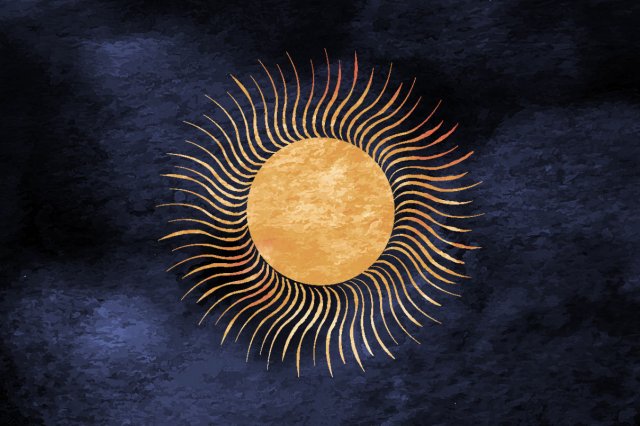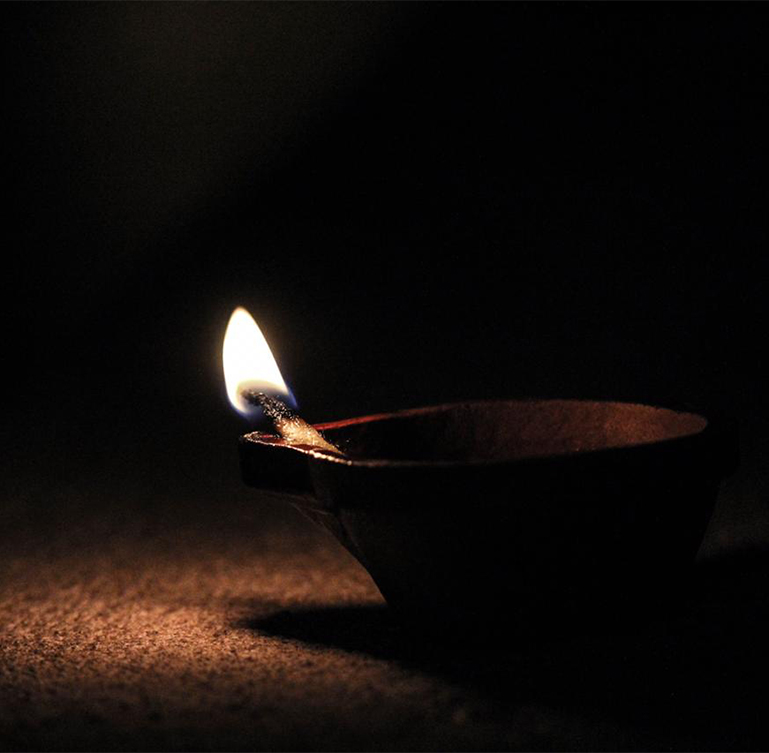

When we invest meaning and a sense of purpose into them, we elevate everyday actions and gestures to the status of rituals. And with every ritual, personal or social, we not only benefit personally but we also reaffirm a long, unbroken tradition

We all have our rituals. The things that we do for ourselves. The small actions that make up our personal routines. The way we brew our coffee, tie our shoelaces, the way in which we organise our bags… these, the minutiae of our routines are our daily personal rituals.
As a routine they subtly structure our day. They help us create our sense of ‘normal day’. We allow our minds to wander aimlessly as we perform these tasks automatically. We remind ourselves of the grocery list or the call that must be returned. Or the book that we need to pick up. In effect, we give our minds a structure in which to be unstructured.
Usually what we tend to recognise as a ritual is an action that we perform with greater awareness such as meditating before going to sleep. What we tend to classify as ‘me time’. Social and cultural rituals are more clearly acknowledged. The bride throwing rice over her head as she leaves her parental home; the first day of a school for a child; worshipping Goddess Lakshmi on Diwali; wearing the colour yellow on Basant Panchami; lighting the bonfire of Lohri; welcoming the rainy season with hot chai and crispy pakodas… rituals permeate our lives at every level.
Broken down into components, rituals are a series of actions performed in a specified sequence. Repetitive actions, especially those with a predictable outcome ground us. They calm us. At the cognitive level, our brain intercepts and then interprets all the data provided by the sensory outposts of sight, sound, taste, touch and smell. The brain organises the inputs into a coherent, structured narrative. And these allow us to automatically create routines based on these narratives. Thereby imposing a sense of chronology and order on a world that is intrinsically chaotic. And then we often use these routines to define ourselves. ‘I am a morning person’. ‘I get cranky if I don’t eat on time’. ‘I need seven hours of sleep’. A routine, with their everyday actions and gestures, lies at the heart of each of these self-definitions.
With each gesture, with each action that we perform in a preordained sequence we invoke the primordial power of a ritual. The story of the ritual is perhaps the first story of mankind.
Rituals begin as a routine. The first step is the practice – repeating an action or gesture over and over again, thereby creating both, a routine and a muscle memory. The psychological impact of a ritual stems from the fundamental component of any ritual action – the gesture itself. And that gesture, the action that is the physical part of a ritual, becomes impregnated with meaning the moment we perform it with attention, with a thoughtful sense of purpose. That elevated state of awareness, that moment of singularity when all our thoughts and actions converge upon a single point is critical to a ritual. This is what invests a ritual with power. The ordinary actions and gestures are transformed into symbolic expressions and their meaning becomes more powerful.
Due to their anxiolytic properties, rituals are now being studied by psychologists. Until now the study of rituals was the realm of Sociologists and Anthropologists. And scholars of Indic studies. Because rituals lie at the heart of the Vedic civilisation. All that remains of the Vedic age is a legacy of knowledge. And much of it comes as verses and formulas that delineate rituals. And commentaries that explain them.

We are beings of the five senses. Our existence is tangible. Our rituals are rooted in the senses. And through them, we align with the physical manifestation of Rta – the ecosystem of which we are but a part.
Fire is at the heart of our oldest recorded rituals – the Vedic fire altar or Yajna. In an unbroken thread of cultural continuity, Fire or Agni, is still at the crux of our most sacred rituals. Because Agni is both a god and a medium through which to reach the gods. He is the threshold. On this side lies the mortal world. On the other side the immortal world. Any Sanatana ritual then; personal, social or cultural; is perhaps a means of reaching out to another world. Of connecting to a cosmic energy. It is the place, the moment when the sacred and the profane come together.
But the sacred in Sanatana is not just the gods. It is Rta. The cosmic order, the principle of truth that permeates and powers the cosmos. The gods are both the manifestations of Rta and the upholders of its truth. A ritual in the philosophical context, then, is a method of aligning ourselves with that overarching cosmic truth.
However, we are beings of the five senses. Our existence is tangible. Our rituals are rooted in the senses. And through them, we align with the physical manifestation of Rta – the ecosystem of which we are but a part. The Sun and the Moon, Earth and Water, Wind and Fire. And the world that is born of the interplay of these elements.
For centuries, our rituals have marked the transitional moments, acknowledging and preparing for what comes next. Before electricity lit up our lives, we acknowledged the approaching night by a ritual of lighting lamps at dusk. We welcomed the warmth of spring with Basant Panchami. While we still looked to the heavens for light we were guided by the phases or Kalas of the Moon. And so, we fasted on the Ekadashi (the eleventh phase of the Moon). And went to bathe in the river to mark the Amavasya (New Moon). And worshipped the Purnima (the Full Moon). A child’s first taste of grains, the first menstruation, Ragas that are sung according to the time of the day and according to the season, celebrating Makar Sankranti – which marks a transition in the Solar journey, all these personal and social rituals mark transitions that impact us.
Today, we have moved away from a conscious awareness of Nature and its rhythms in an urban setting. We are out of tune. We need personal rituals. To calm us. To help us to slow down. To navigate the hurly burly of daily life. But also, to nurture ourselves, to allow our minds to breathe. To realign ourselves with the natural world. To accept the transitions because nature is never static, it is in a constant state of change. We need social rituals because that is how we manifest and celebrate our cultural values and beliefs. If no man is an island, then perhaps the bridge that connects him to other men is a shared ritual. Whether political, personal or religious. But rituals also return us to our individual selves. Because the self is the site of the ritual.
This writing, meaning, intention of the above article is so beautiful, pure impact and mesmerizing that I was taken away to a land of soothe and warmth and I was floating in the bliss of knowing that alignment with oneself and nature is possible through strong rituals. I am very glad i landed on the site and that I am going to start this beautiful journey along with PARO !
P.s: Your words are nothing less than magic Nilakshi 🙂